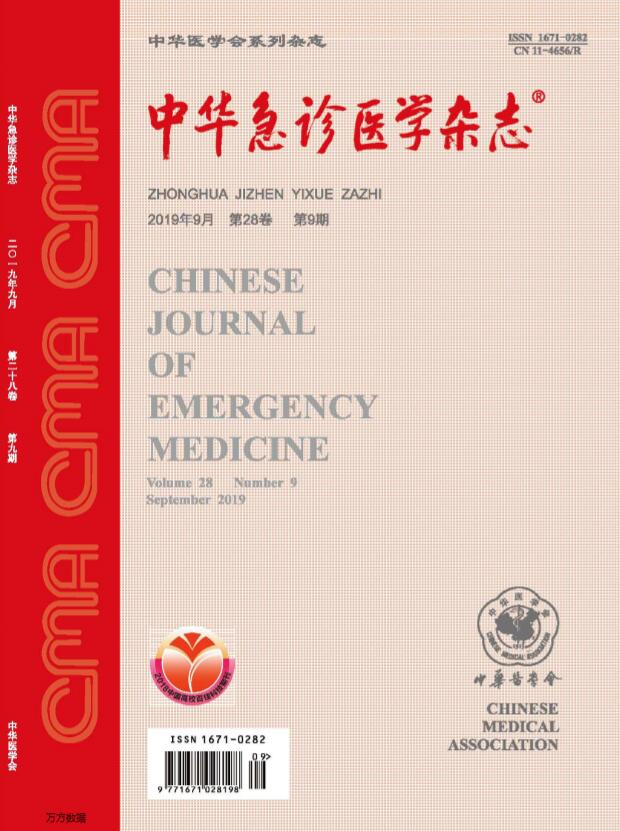Emodin regulates microRNA expressions of ileum in sepsis mice model
Q4 Nursing
引用次数: 0
Abstract
Objective To investigate the regulation of emodin on microRNA expressions in mouse model with sepsis by GeneChip microRNA array. Methods Forty two c57 mice were randomly (random number) divided into 3 groups: sham operation group (sham group, n=14),sepsis group(n=14) and emodin group (n=14). The sepsis model of the mouse was subjected to cecal ligation and puncture (CLP). Mice in emodin group received intraperitoneal injection of emodin (40 mg/kg) half an hour before operation and every 12 hours after CLP. All mice were sacrificed 48 h after surgery and part of the ileum were removed for intestine tissue stained with hematoxylin eosin. The levels of tumor necrosis factor-α(TNF-α), interleukin-6 (IL-6) and intestinal fatty acid binding protein (I-FABP) in peripheral blood were measured by enzyme-linked immunosorbent assay (ELISA). Total RNA of ileum tissues was extracted from the sepsis group and emodin group, and then subjected to miRNA microarray. The results of microarray were further verified by quantitative real-time PCR (qRT-PCR). Target genes of differentially expressed miRNAs were predicted and subjected to gene ontology (GO) and KEGG pathway enrichment analysis. Data of multi-groups were analyzed by one way variance (ANOVA) and inter-group comparisons were made by SNK-q tests. Mann-Whitney U test was used when homogeneity of variance were not met. The value of P<0.05 was considered statistically significant. Results Compared to the sepsis group, the levels of serum TNF-α, IL-6 and I-FABP in the emodin group were decreased significantly. MiRNA microarray showed that 23 miRNAs were differentially expressed in the emodin group as compared to the sepsis group, among which 17 miRNAs were up-regulated and 6 miRNAs were down-regulated. qRT-PCR results were consistent with miRNA array data. Target genes of 10 selected miRNAs were predicted and subjected to bioinformatic analysis. A total of 3 410 target genes were significantly enriched in 2 072 GO biological process terms, 246 GO cellular component items and 277 GO molecular function terms. Moreover, KEGG pathway analysis showed that these differential miRNAs were involved in the regulation of PI3K-Akt signaling pathway, MAPK signaling pathway, and TNF signaling pathway. Conclusions Emodin can regulate the expression of multiple microRNAs, and play an important role in protecting the intestinal mucosal barrier via a variety of targets and pathways. Key words: Emodin; Sepsis; Intestinal mucosa; MicroRNA; Expression profiles; Bioinformatics大黄素对脓毒症小鼠回肠microRNA表达的调节作用
目的应用基因芯片技术研究大黄素对脓毒症小鼠模型中microRNA表达的调控作用。方法42只c57小鼠随机分为3组:假手术组(假手术组,n=14)、脓毒症组(n=14)、大黄素组(n=14)。采用盲肠结扎穿刺法(CLP)建立小鼠脓毒症模型。大黄素组小鼠术前半小时腹腔注射大黄素(40 mg/kg),术后每12 h腹腔注射一次。术后48 h处死所有小鼠,切除部分回肠,取苏木精伊红染色的肠组织。采用酶联免疫吸附法(ELISA)检测小鼠外周血肿瘤坏死因子-α(TNF-α)、白细胞介素-6 (IL-6)和肠脂肪酸结合蛋白(I-FABP)水平。脓毒症组和大黄素组分别提取回肠组织总RNA,进行miRNA芯片检测。采用实时荧光定量PCR (qRT-PCR)进一步验证芯片结果。预测差异表达mirna的靶基因,并进行基因本体(GO)和KEGG通路富集分析。多组资料采用单因素方差分析(ANOVA),组间比较采用SNK-q检验。方差齐性不满足时采用Mann-Whitney U检验。P<0.05为差异有统计学意义。结果与脓毒症组比较,大黄素组大鼠血清TNF-α、IL-6、I-FABP水平明显降低。MiRNA芯片显示,与脓毒症组相比,大黄素组有23个MiRNA差异表达,其中17个MiRNA上调,6个MiRNA下调。qRT-PCR结果与miRNA阵列数据一致。对10个选定的mirna的靶基因进行预测并进行生物信息学分析。共有3410个靶基因在2072个氧化石墨烯生物过程项、246个氧化石墨烯细胞组分项和277个氧化石墨烯分子功能项中显著富集。此外,KEGG通路分析显示,这些差异mirna参与了PI3K-Akt信号通路、MAPK信号通路和TNF信号通路的调控。结论大黄素可调节多种microrna的表达,并通过多种靶点和途径对肠黏膜屏障起到重要的保护作用。关键词:大黄素;脓毒症;肠道粘膜;微rna;表达谱;生物信息学
本文章由计算机程序翻译,如有差异,请以英文原文为准。
求助全文
约1分钟内获得全文
求助全文
来源期刊

中华急诊医学杂志
Nursing-Emergency Nursing
CiteScore
0.10
自引率
0.00%
发文量
8629
期刊介绍:
Chinese Journal of Emergency Medicine is the only national journal which represents the development of emergency medicine in China. The journal is supervised by China Association of Science and Technology, sponsored by Chinese Medical Association, and co-sponsored by Zhejiang University. The journal publishes original research articles dealing with all aspects of clinical practice and research in emergency medicine. The columns include Pre-Hospital Rescue, Emergency Care, Trauma, Resuscitation, Poisoning, Disaster Medicine, Continuing Education, etc. It has a wide coverage in China, and builds up communication with Hong Kong, Macao, Taiwan and international emergency medicine circles.
 求助内容:
求助内容: 应助结果提醒方式:
应助结果提醒方式:


